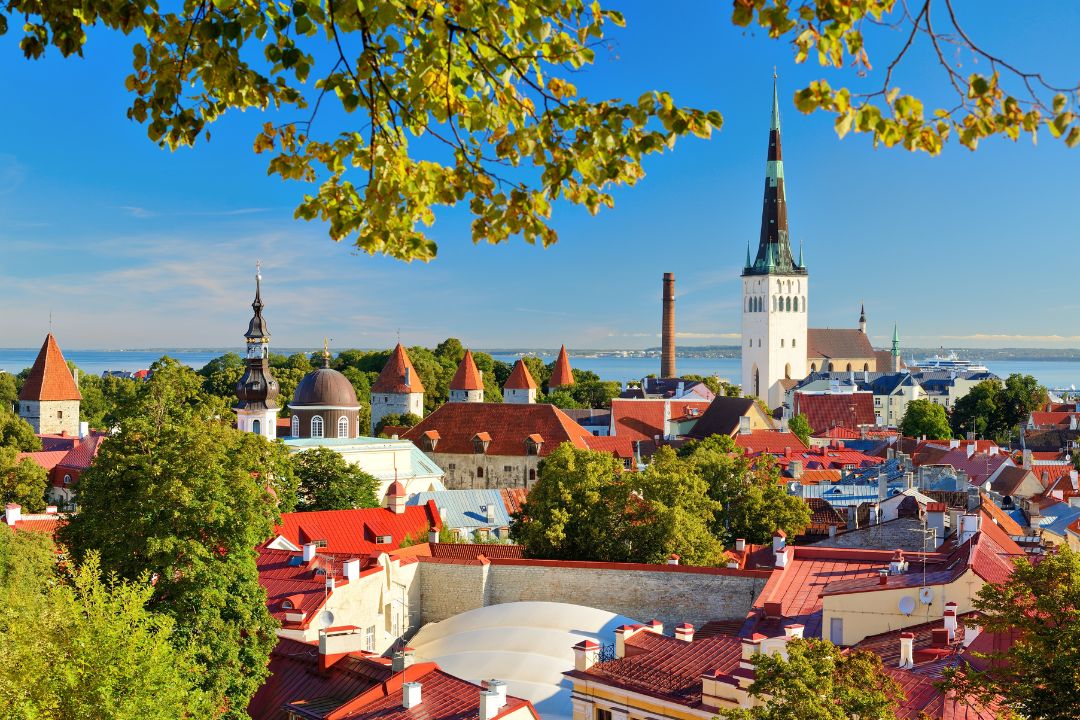Estonia is the northernmost of the three small countries commonly referred to as The Baltics. While still a relatively young country, regaining independence after Soviet occupation on 20 August 1991 (and beating neighbouring Latvia by just one day), present-day Estonia has actually been inhabited for over 10,000 years. And the Estonian people were first mentioned 1,000 years ago in Roman documents which called them Aesti. Plenty of history to discover here, I’d say…
Download our 2024 Minimalist Travel Wardrobe and Carry-On Packing List
This list for women and men was created as a result of more than seven years of full-time travel around the world in all seasons with only carry-on luggage. This is the packing list we have used as we embark on our adventures into 2024.
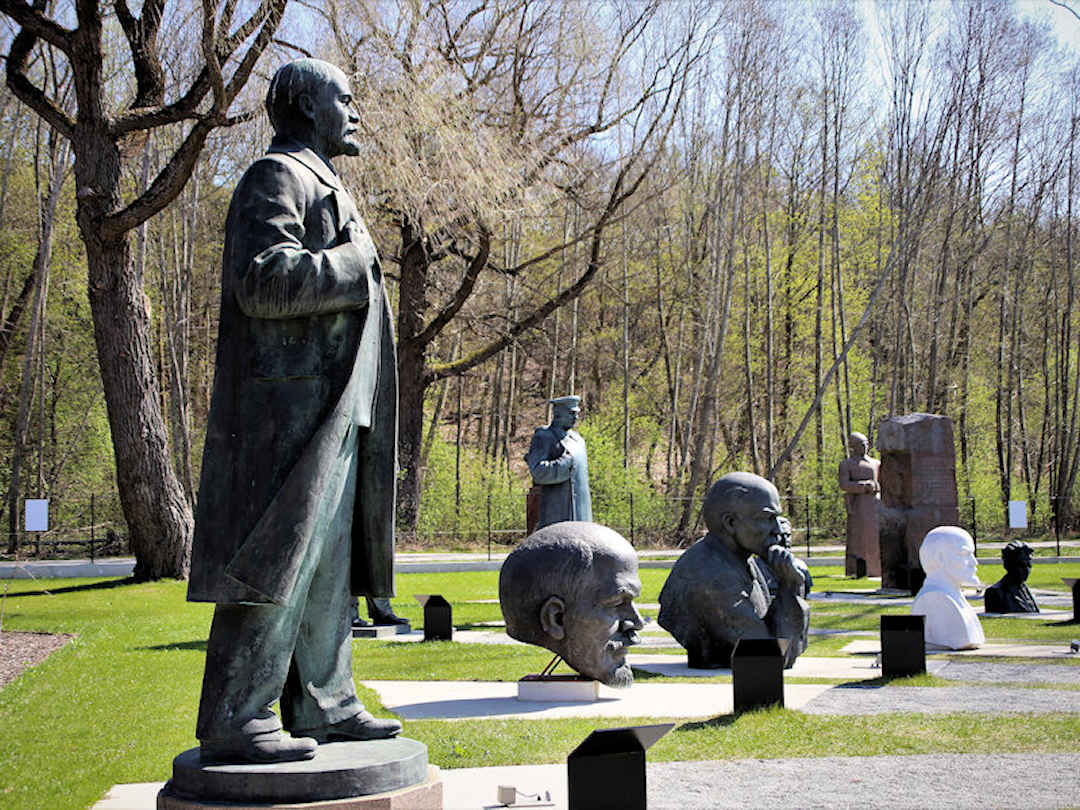
If you ever wondered what happened to the torn-down Lenin and Stalin statues head to Maarjamäe Castle near Tallinn | Image courtesy of Kate Sobol
Three reasons why you should visit Estonia
- If you’re into history and the great outdoors as much as unusual experiences (for example, walking around a meteorite crater or in an upside-down house) Estonia has it all.
- Estonia also has a flourishing start-up scene. Companies like Skype, TransferWise and Bolt/Taxify were born here. The country makes it super easy to establish an online business with its e-residency program. So, if you’re an online entrepreneur or digital nomad, it might be time to check out Estonia (in person).
- While it shares historical and culinary aspects with Latvia and Lithuania, Estonia has a slightly more Scandinavian feel to it, and listening to Estonians, you could easily think you’re in Finland.
Time to visit? Let’s get to it…
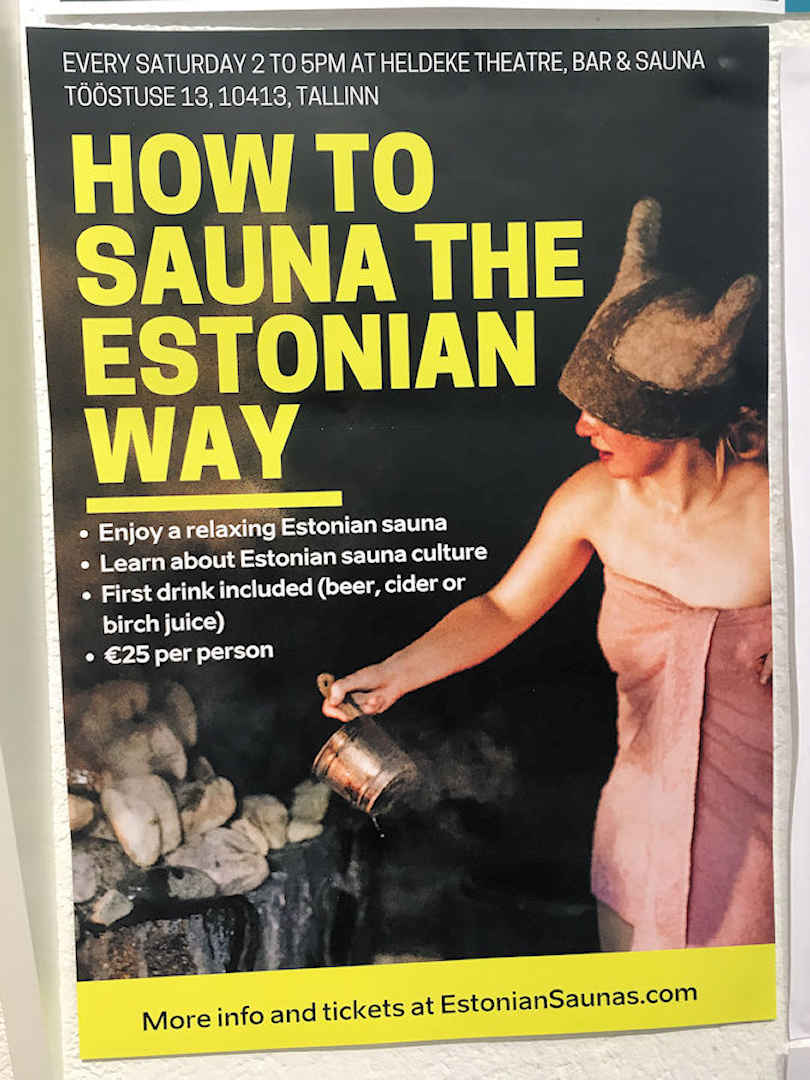
One of the cool and unusual experiences you can have in Estonia - shame we only found this on our way to the airport
Map of Accommodation, Points of Interest, Eateries and Transport
Below is a map of the recommended accommodation, points of interest, eateries and transport terminals/stops mentioned in this article.
| Destination | Suggested Stays (Nights) |
|---|---|
| Tartu | 2 nights |
| Tallinn | 3 nights |
| Kuressaare | 2 nights |
Our itinerary assumes that you travel to Tartu overland from Latvia and fly out of Estonia from Tallinn (IATA Code: TLL). If you want to start your trip in Tartu, your best airport choice would be Tallinn (2-2.5 hours north-west from Tartu). Tartu has its own airport, but it is only served by FinnAir. Another option would be Riga airport (IATA Code: RIX), which is 4-5 hours by train/bus from Tartu.
To organise your mode of transport between the three stops (and your car hire on the island of Saaremaa) check out the transport section in our Baltics post.
But first, let’s talk about what there is to see and do…
How much does it cost to explore the Baltics?
Visiting the Baltic countries cost us on average EUR45.17/USD50.54 per person per day. Check out our individual country costs here:
Highlights of Tartu
Tartu is Estonia’s second-largest city. Situated on the banks of the Emajõgi River, it is very easily walkable, with many parks and outdoor cafes to have a rest and watch the world go by.
To get your bearings, we suggest starting your visit to Tartu with a self-guided walking tour. The Tourism Office provides an excellent little brochure in several languages – you can pick up a physical copy inside the train station when you arrive or at the tourism office inside the Town Hall.
Combining the two routes described in the brochure takes you past all the interesting sites Tartu has to offer: through Toomemägi Park with the impressive Cathedral ruins, through the Old Town (including Tartu’s very own Leaning House and the last remaining piece of Tartu’s old city wall), along the Emajõgi River, and past interesting artistic sculptures as well as statues commemorating the many famous scientists who worked here.
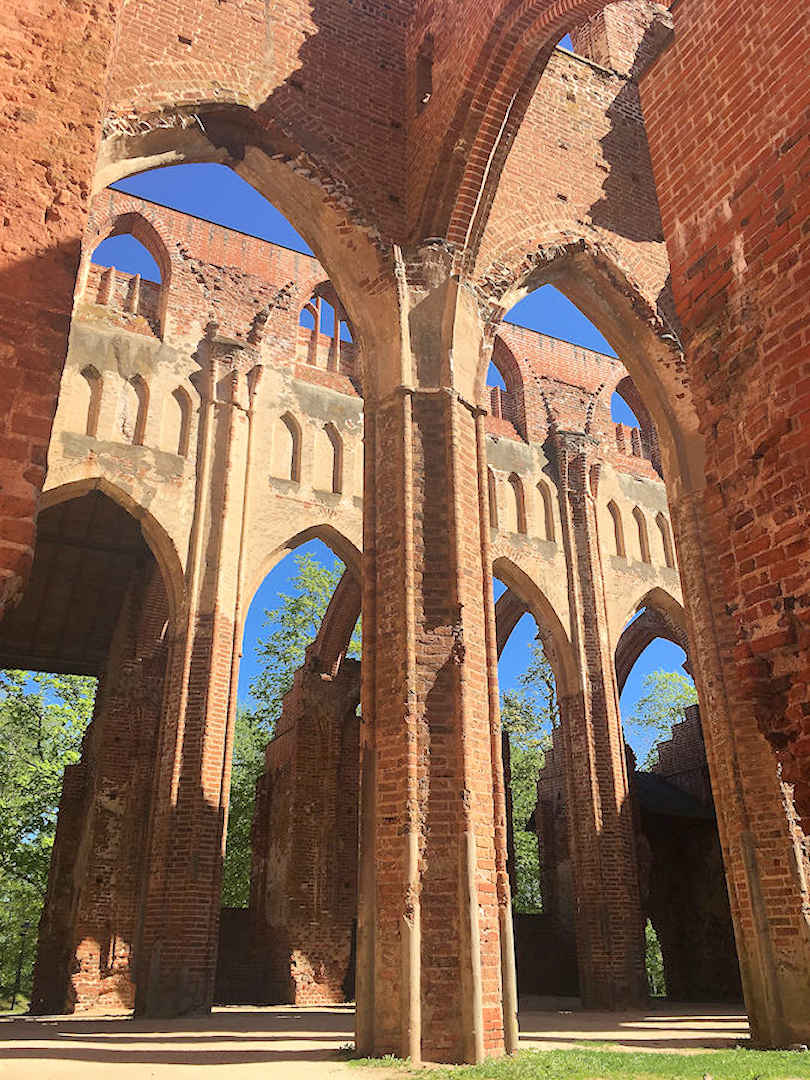
Speaking of scientists: Founded in 1632 by King Gustav Adolph of Sweden as the Academia Gustaviana in the then-Swedish province of Livonia, the University of Tartu is the oldest university in Estonia.
The university itself has had a tumultuous history, being moved to both Tallinn and Pärnu (and even closed intermittently) during wars and famine in the 17th and 18th centuries. The University of Tartu produced not only a Nobel Prize Laureate and several prime ministers. Today, the University of Tartu is the Alma Mater of pretty much every Estonian doctor, dentist, pharmacist, judge and prosecutor.
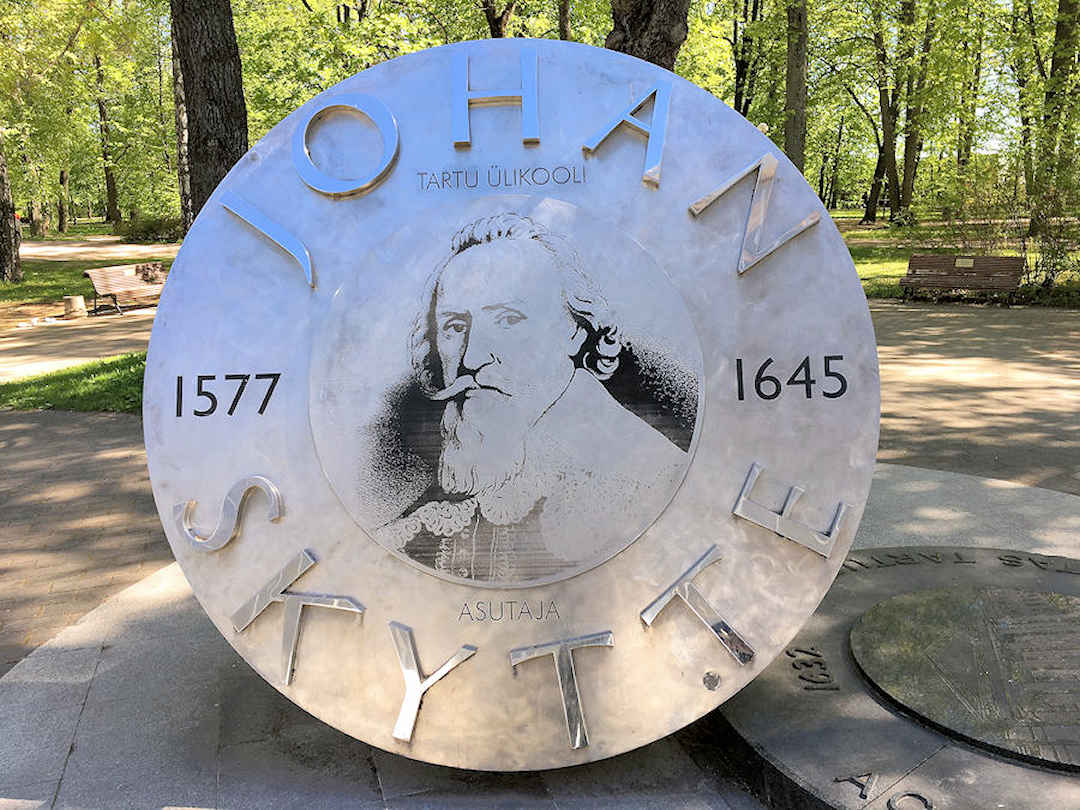
Tartu University was actually the brainchild of Johan Skytte - a sculpture in the shape of a stamp commemorates him
After lunch, we recommend a visit to one of Tartu’s museums, for example:
- If you love sports, the Estonian Sports and Olympic Museum [Official website, Google Maps location] might be for you. Paul certainly learned a thing or two.
- If you’re more into science, check out the AHHAA Science Centre {Official website, Google Maps location].
Both museums are very interactive, so kids will enjoy them too.
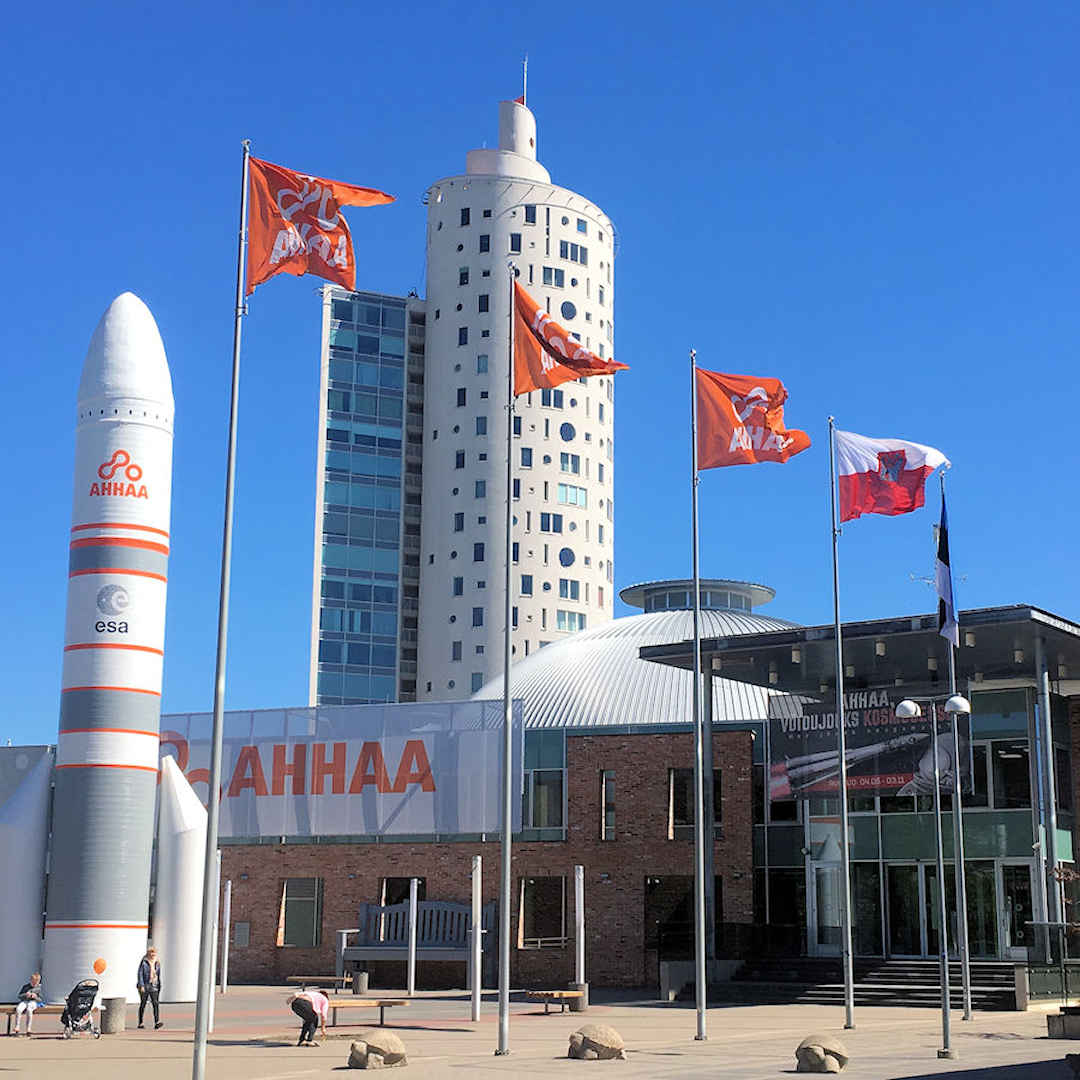
Snail Tower, Tartu’s tallest building, with the interactive AHHAA Science Centre
If you are interested not only in history but also in modern architecture, Tartu has a few interesting examples for you:
- For starters, you can’t miss the Snail Tower [Google Maps location], Tartu’s tallest building next to the AHHAA Science Centre. Both were built between 1997 and 2011 (by architects Künnapu and Padrik).
- Located two kilometres north of the city centre, the Estonian National Museum [Official Website, Google Maps location], which opened in 2016, was built into the runway of a former Soviet military airfield (by architects Dorell Ghotmeh Tane).
Just around the corner from the latter, you can challenge your senses in the upside-down house [Official website, Google Maps location].
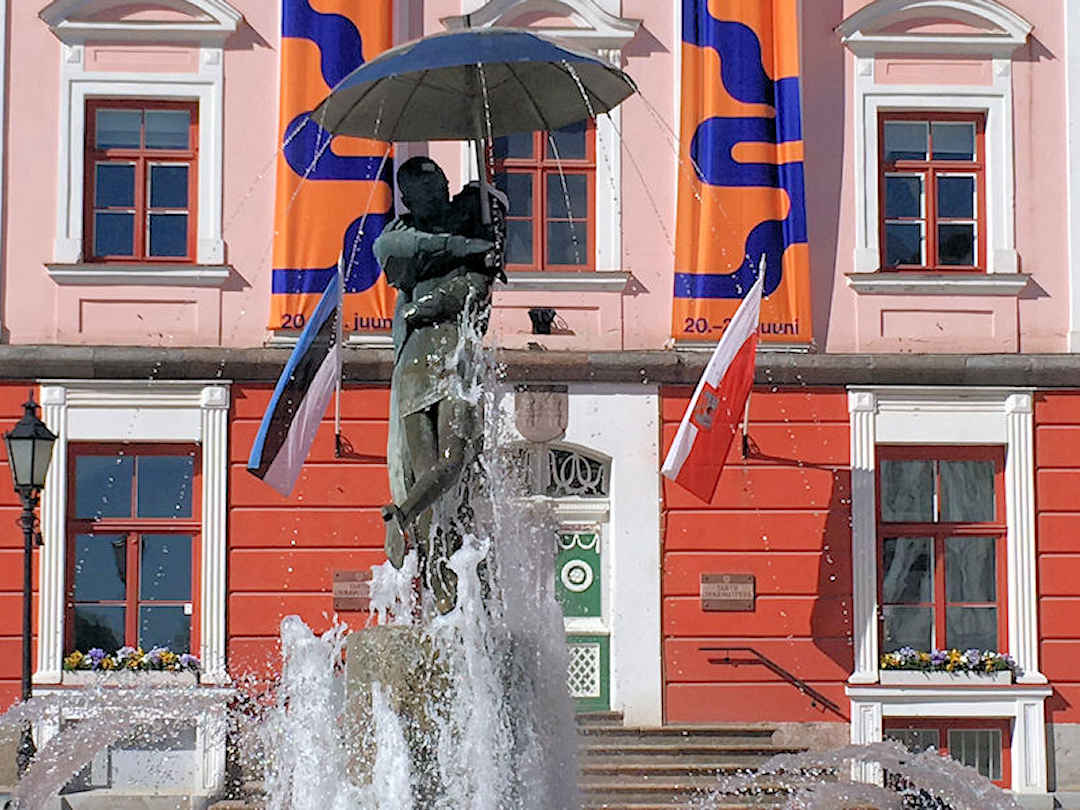
'The Kissing Students' sculpture and fountain in front of the Town Hall is one of the most recognised symbols of Tartu
Finish your day in Tartu with a concert at St Johns Church [Official website, Google Maps location] (concerts are held 3-4 times a month).
Alternatively, head to Genialistide Klubi / Genialists’ Club [Official website, Google Maps location] to meet friendly locals and enjoy some cool acts, or check what’s on at Aparaaditehas [Official website, Google Maps location], an old widget factory turned culture centre in the Karlova neighbourhood.
Highlights of Tallinn
Day One
The historic centres of all three Baltic capitals are UNESCO world heritage sites. Tallinn’s Old Town with its hilly location in an otherwise relatively flat city is particularly picturesque.
To get a good understanding of the history of Tallinn and its many medieval buildings (including Europe’s oldest continuously operating pharmacy (Raepteek, established in 1422) [Official website, Google Maps location), we recommend joining the yellow suitcase free walking tour. The tour starts daily at 1200h outside the Tallinn Tourist Information Centre [Official website, Google Maps location] and takes approximately two hours.
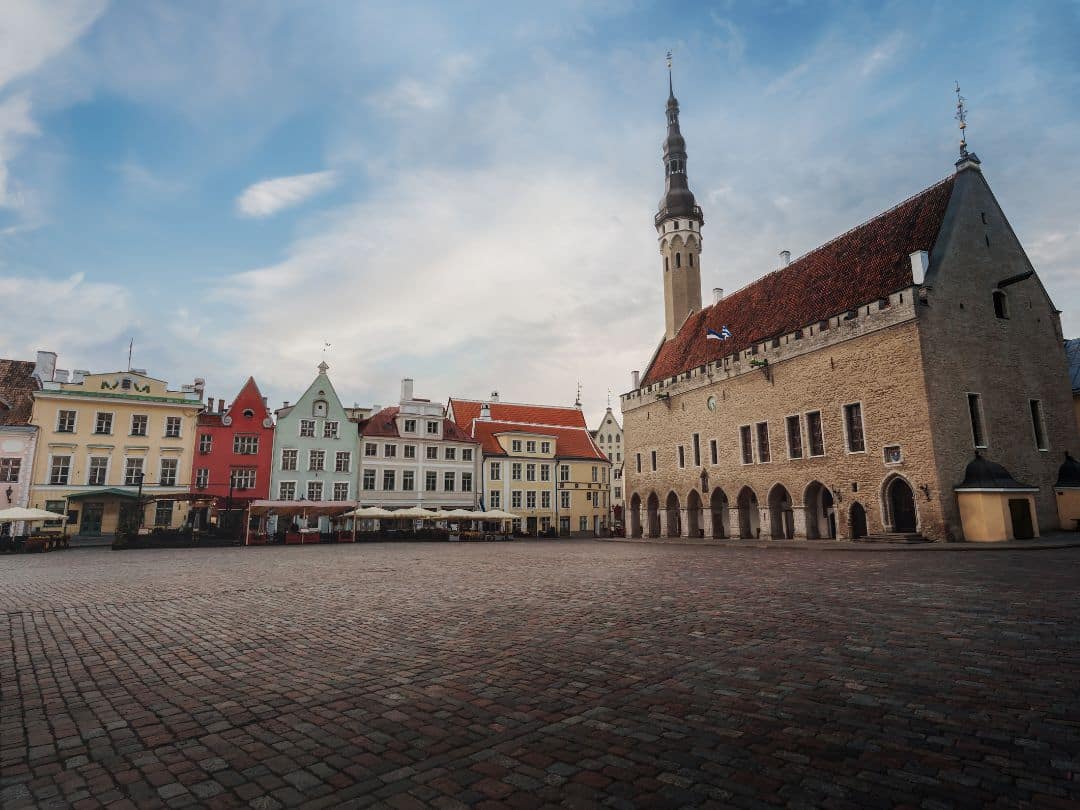
The free walking tour takes you all around Tallinn's Old Town including the medieval Town Hall Square
If you’ve never been on a submarine (but always wanted to), head to the Seaplane Harbour after lunch. The Estonian Maritime Museum / Lennusadam [Official website, Google Maps location] is located in an old seaplane hangar, a masterpiece of engineering in its own right. It is the most popular museum in Estonia. The entry tickets aren’t cheap though…
After the museum visit, take a stroll back towards the Old Town, past the many wooden houses in the Kalamaja district [Google Maps location] and the Balti Jaama Market [Official Website, Google Maps location]. And make sure you stop for a drink (or two, three, …) and a bite to eat at one of the many cafes and bars at the Depoo (Google Maps location] and/or the Telliskivi Creative City / Telliskivi Loomelinnak [Official website, Google Maps location].
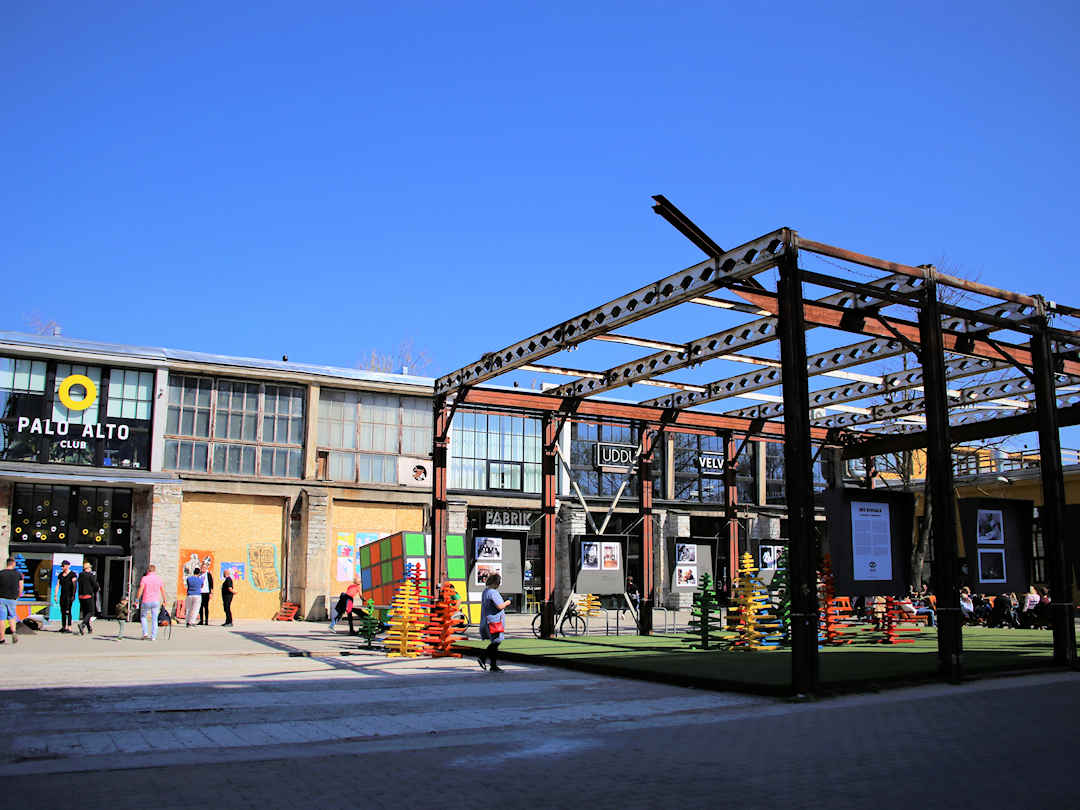
The Telliskivi Creative City and nearby Depoo are great to enjoy a chilled drink and a bite to eat
Day Two
If you happen to be in town on a Saturday head to St Mary’s Cathedral [Official Site] for the Organ Recital at 1200h. Afterwards, enjoy the views over Tallinn from the bell tower.
Speaking of views, Tallinn’s Old Town has several vantage points from which one can enjoy views over the city and towards the Baltic Sea. Our favourite was the Patkuli viewing platform [Google Location].
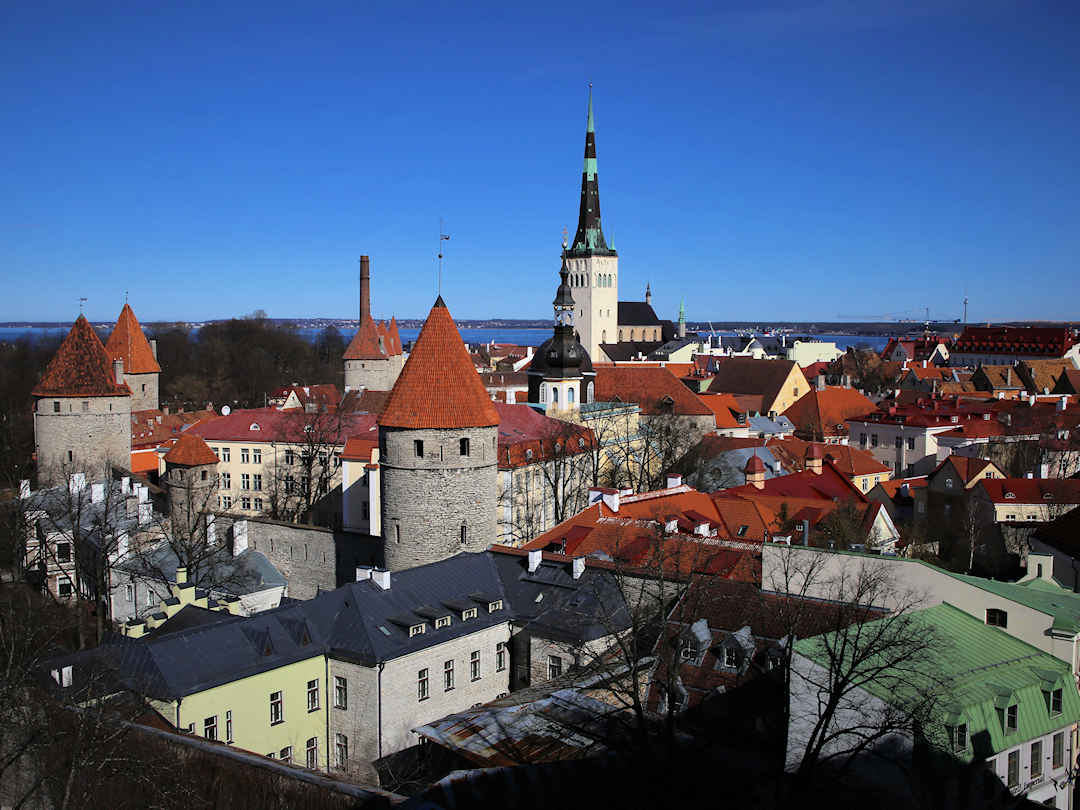
Tallinn's old town has several great viewpoints over the city and towards the Baltic Sea | Image courtesy of Kate Sobol
After lunch, check out the Vabamu Museum of Occupations and Freedom [Official site, Google Map Location] to learn more about life under the Soviet regime, about Estonians living in exile and about Estonia’s struggle for independence from the perspective of ordinary Estonians.
If you are travelling with children, the Vabamu Museum will be more suitable as it is more interactive and contains a special exhibition for children.
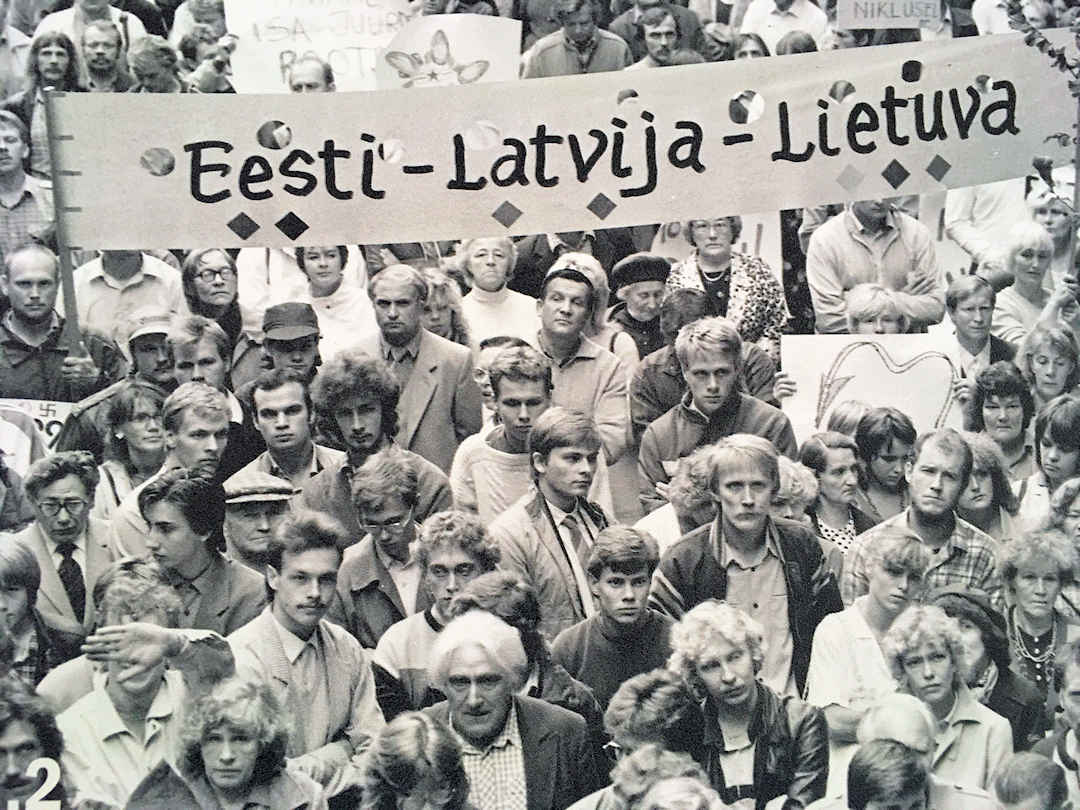
2019 marked the 30th Anniversary of the Baltic Way, which ultimately led to the Baltics regaining their independence
Highlights of Saaremaa
With close to 40 inhabited islands, you are spoilt for choice in Estonia. We (chose and) recommend visiting Saaremaa, Estonia’s largest island – for its variety of things to see and do and for its ease of reach from Tallinn.
While the bus ride to/from Saaremaa is very comfortable, for the one full day you have on the island, we suggest you hire a car and travel anti-clockwise along a circular route:
Your first stop is Kaali, home to the Kaali Meteorite Craters [Google Maps location] (20 kilometres / 20 minutes drive from Kuressaare). Crater number one is the biggest, most obvious and best-known one. You can check out the others though too. If you don’t want to walk through fields in search of barely noticeable craters, crater number six is right by the roadside towards Angla (and marked) so you can’t miss it. And don’t forget to pop by the Kaali Meteorite Museum / Kaali meteoriitika ja paekivimuuseum [Official website]
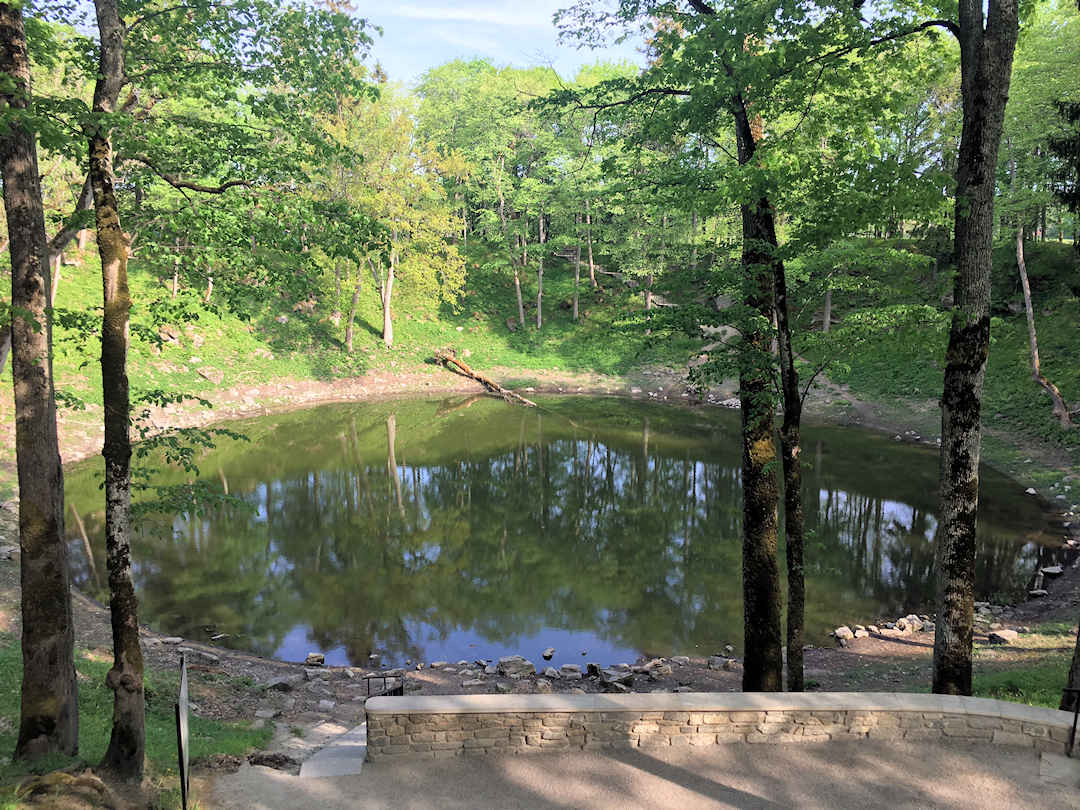
The largest of nine meteorite craters in the village of Kaali measures 110 metres in diameter
Instead of continuing up the road to Angla, you continue your drive along road number 10 (back towards the ferry). Near the village of Koigi (40 kilometres/35 minutes from Kaali) is Saaremaa’s largest swamp. The Koigi Bog [Google Maps location] can be explored along a five-kilometre-long walking trail [RMK Trail Route].
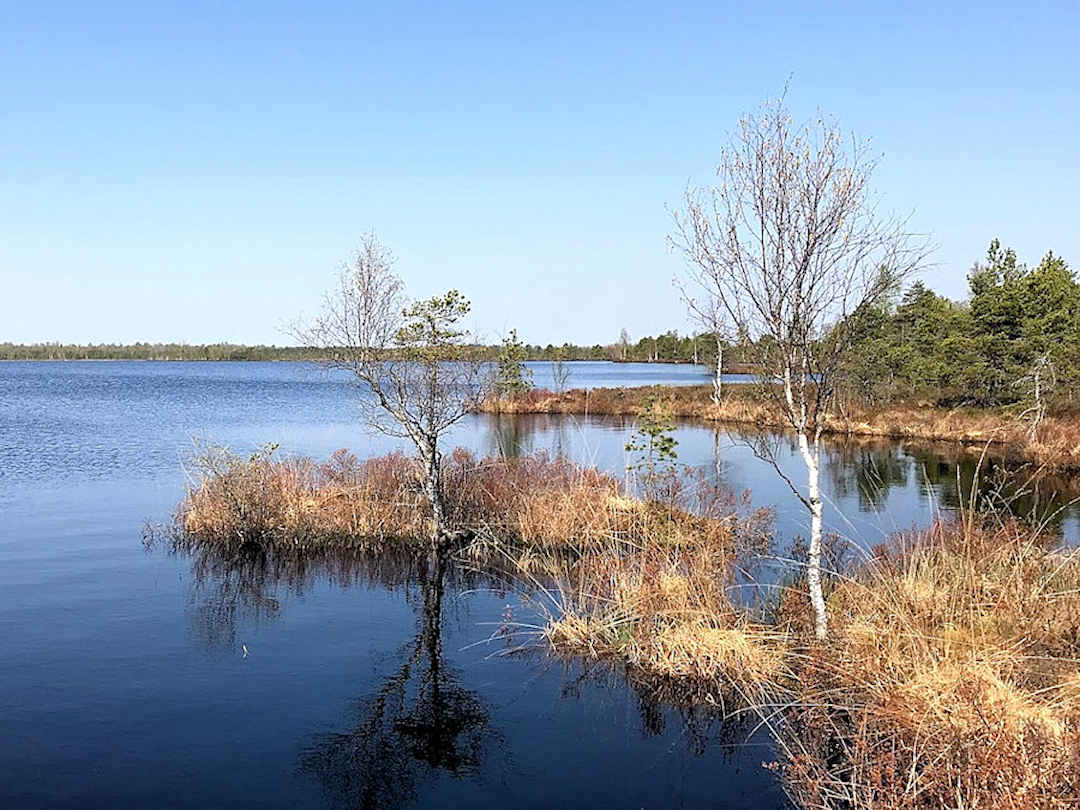
Explore Koigi Bog, Saaremaa's largest swamp, along its 5 kilometre walking trail
From Koigi, head north-west to visit the Windmills in Angla [Official website, Google Maps location] and Karja Catherine Church / Karja kirik [Visit Estonia website, Facebook page, Google Maps location] (35 kilometres/30 minutes from Koigi – both are only approximately 2 kilometres away from each other).
The Angla Windmill Park is the largest remaining set of windmills that once dotted the whole island. It comprises a number of post mills and one Dutch windmill. You can explore the inside of a few of them, and learn about milling and the local area. There is also a small museum with old but well-maintained machinery in the main building.
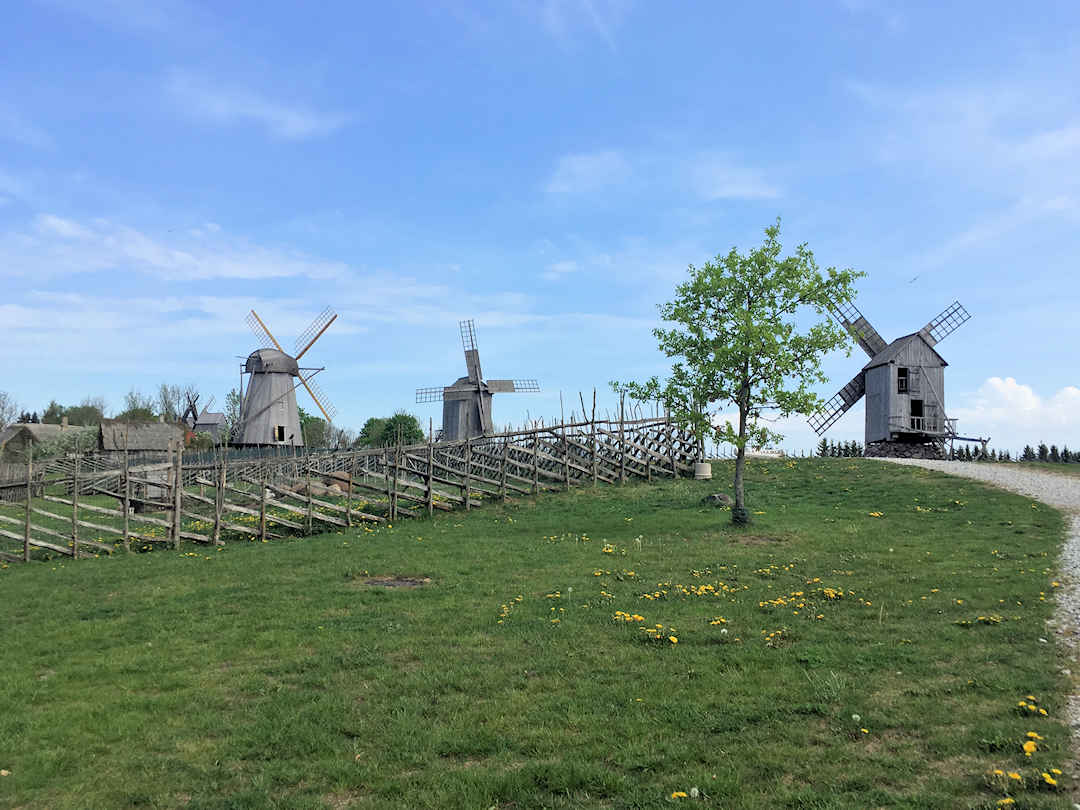
Angla Windmill Park is the largest remaining set of windmills that once dotted the whole island
Nearby Karja church was closed when we visited. We peaked through the keyhole of the church portal (you can see the altar with the stained glass window behind it) and explored the surroundings (which are beautiful too). If you want to see the interior of the church: there are services every (other) Sunday. The church also seems to be open daily in Summer, at least according to the ladies staffing the Angla Windmill site.
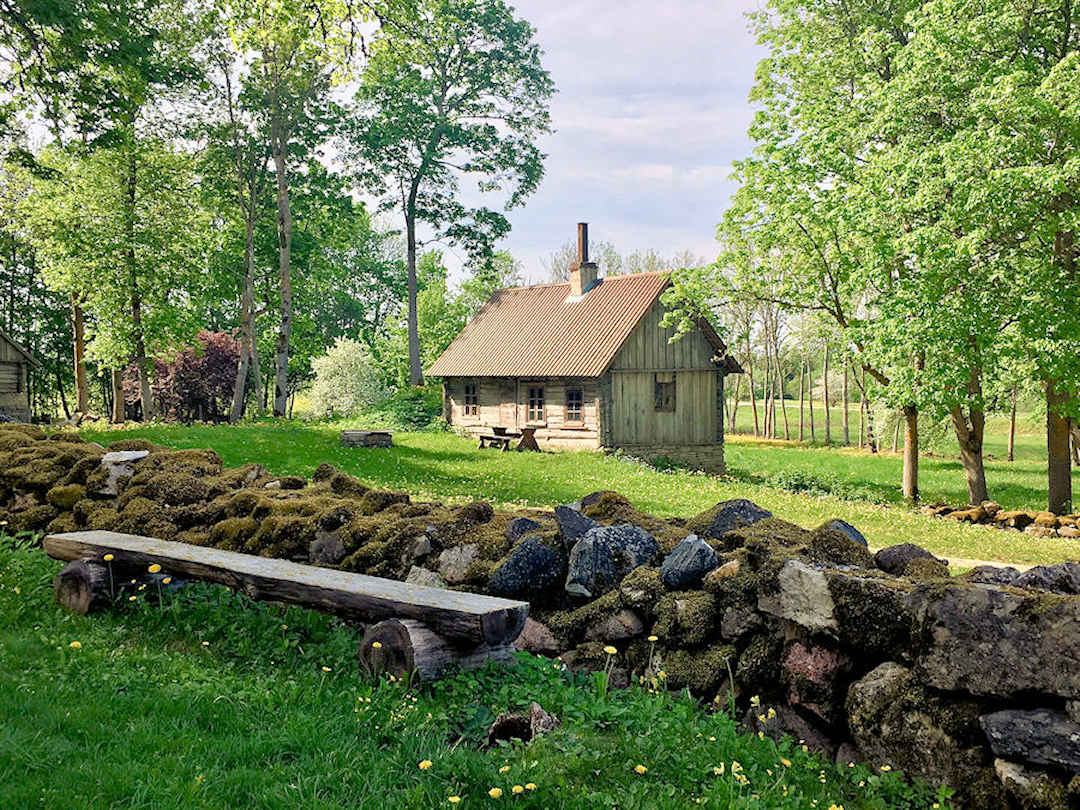
Even Karja Church's surroundings are worth a visit
Continue your journey westwards along the coast to Panga Cliff [Visit Estonia website, Google Maps location] (35 kilometres/30 minutes from Angla), with 20 metres of Saaremaa’s highest sea cliff. From Panga Cliff, head 35 kilometres/30 minutes south/southwest and stop at Karujärve Lake [Google Maps location] for a swim. The abandoned houses along the road to the lake apparently belonged to the Soviet Army that was stationed here during the occupation.
From the lake, return to Kuressaare (27 kilometres/25 minutes) or head south to the Sõrve Lighthouse [Official website, Google Maps location] Saaremaa’s southernmost lighthouse.
Without the lighthouse, the loop is approximately 190 kilometres long, requiring just under three hours of driving (plus stops). The trip to/from the lighthouse adds approximately 90km or 75 minutes of driving to your overall journey. If you’re visiting Saaremaa outside of Summer (peak season) bring a picnic, as there won’t be much open on your route.
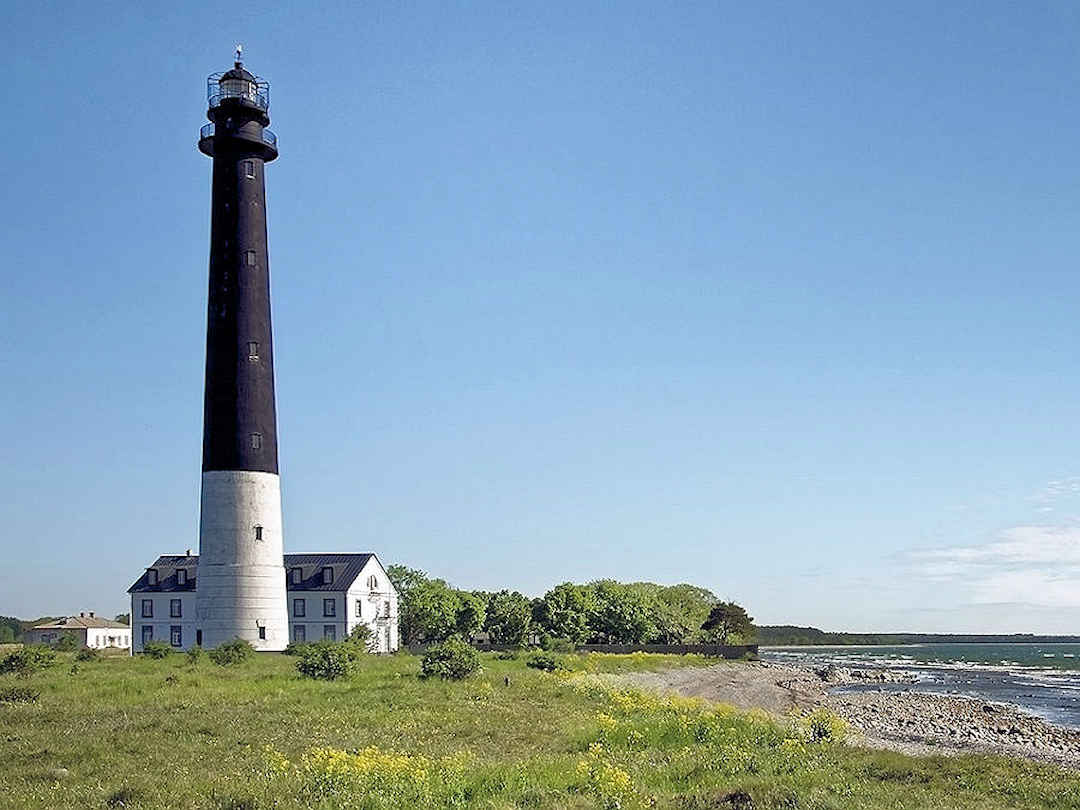
Saaremaa's southernmost lighthouse is actually closer to the Latvian coast than to Kuressaare
If you have time in the afternoon (on your arrival day), we recommend visiting Kuressaare Castle / Kuressaare piiskopilinnus [Official website, Google Maps location]. The castle and fortifications have recently been restored and are quite the sight. The place overflows with exhibits, and it’s a bit of a maze, so make sure you ask for a floor plan to guide you through the collection in chronological order.
Alternatively, you could spend the afternoon getting pampered with a relaxing treatment at one of the spa hotels. After all, Kuressaare is a spa town.
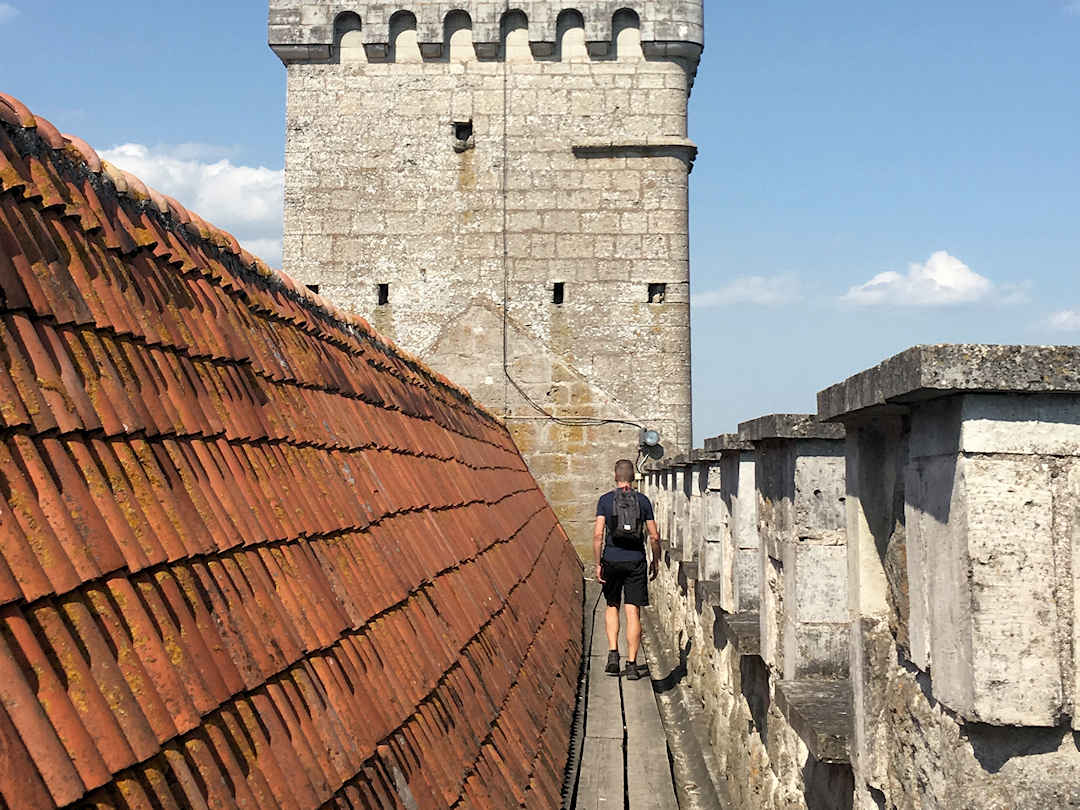
Kuressaare Castle is not only impressively looking but a treasure trove for those interested in local history
What other suggestions do you have for a first-time visitor? Have you been to the places we recommend?
I wrote this Estonia Itinerary and travel guide based on our own experience. If you have been Estonia as well and you have something to add to this list of affordable things to do, please feel free to contact me. If you liked my Estonia tips and found them helpful, I would appreciate if you could share them with your friends and family via the Share buttons below. Even better, link to the page from your personal blog or social media platforms.

